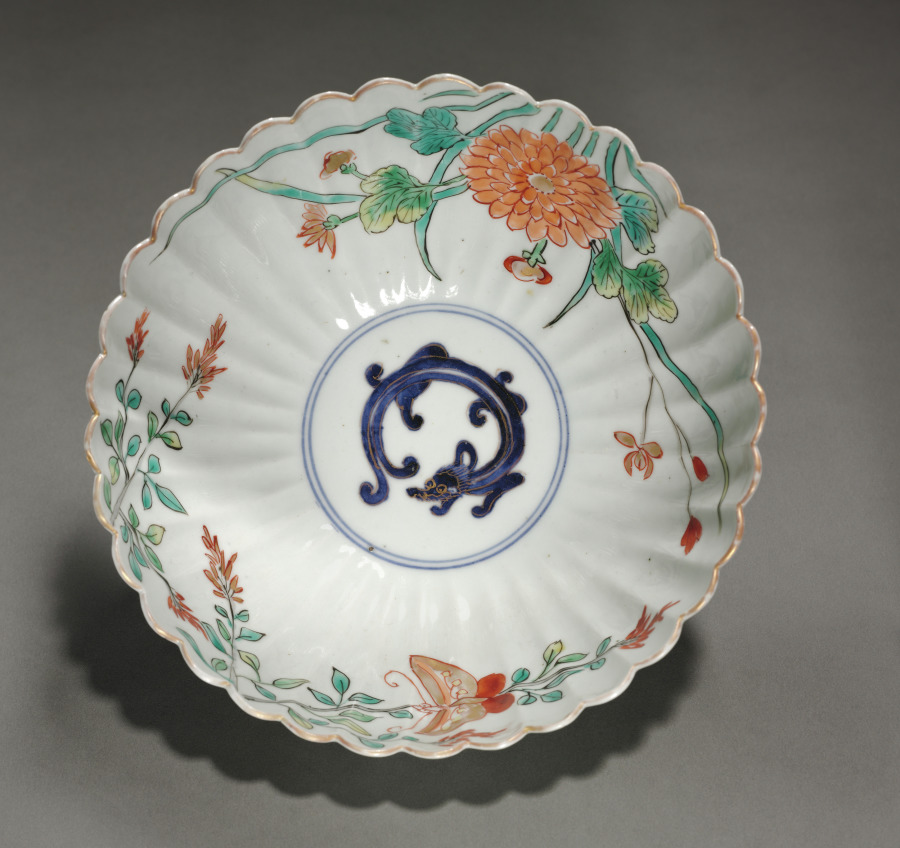| schema:description 10 | "wall_description: This bowl is in the style called <em>kakiemon</em> (after the name of the artisan family). The style is common among Japanese export porcelain known as Imari ware (after the name of the port) or Arita ware (after the name of the city of production). The bowl’s fluted shape complements the chrysanthemum design. Both its interior and exterior feature flowering sprigs with a butterfly and chrysanthemum painted along the perimeter. In the center of the interior’s bottom, a humorous dragon-like squirrel was painted in cobalt blue and outlined in gold....(more)" |
| schema:description | "digital_description: A dragon encircled by sprays of flowers and a butterfly enliven the interior of this fluted bowl. The exterior has similar decoration, with touches of gold on some petals. The flutes enhance both the visual and tactile experience; their tapered forms draw the eye from the edges inward and provide ridges for the hands....(more)" |
| schema:description | "culture: Japan, Edo Period (1615-1868)" |
| schema:description | "creditline: Severance and Greta Millikin Collection" |
| schema:description | "type: Ceramic" |
| schema:description | "collection: Japanese Art" |
| schema:description | "id: 140284" |
| schema:description | "tombstone: Fluted Bowl with Dragon, Butterfly, and Flowers, early 1700s. Japan, Edo Period (1615-1868). Porcelain with underglaze blue and overglaze color enamels and gold (Hizen ware, Kakiemon type); diameter: 18.6 cm (7 5/16 in.); height: 8.6 cm (3 3/8 in.). The Cleveland Museum of Art, Severance and Greta Millikin Collection 1964.253...(more)" |
| schema:description | "measurements: Diameter: 18.6 cm (7 5/16 in.); height: 8.6 cm (3 3/8 in.)" |
| schema:description | "technique: Porcelain with underglaze blue and overglaze color enamels and gold (Hizen ware, Kakiemon type)" |

